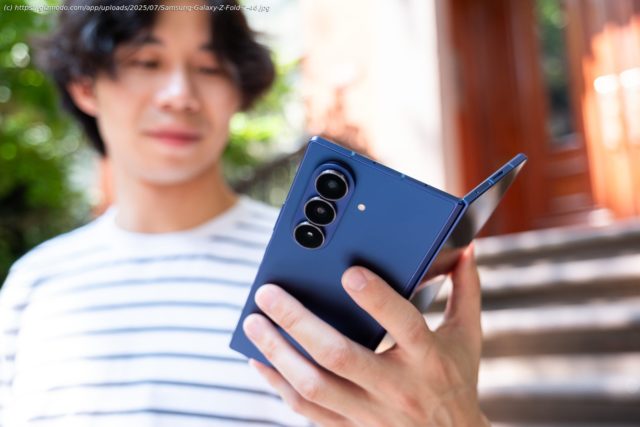I haven’t been this obsessed over a Samsung phone since the company’s literally explosive Galaxy Note 7.
Disregard the fact that there’s a whole world of Chinese-made book-style foldables as thin and light as the Galaxy Z Fold 7 that Americans can’t buy, and Samsung’s latest phone-to-tablet foldable is what we’ve been waiting for. It only took Samsung six years to make its flagship foldable as svelte as a regular bar smartphone, but the Z Fold 7 delivers in all aspects. The only thing that holds it back is the $2,000 price tag, a $100 increase over last year’s Z Fold 6.
It’s often difficult to see the march of progress year-over-year. It’s only over multiple generations of small improvements that you see how far along things have really come. The road to the Z Fold 7 has been in the making since 2019, when Samsung released the first-gen Fold and disaster struck immediately when people started peeling its pre-installed protective film and literally destroying the folding display. The original Fold was also too skinny to use as a regular phone when closed, the cover screen was too tiny, and the whole thing was too thick and heavy. The Z Fold 7 is a miracle in engineering compared to that first Fold—delivering everything that Samsung wanted to achieve with that pioneering foldable.
Year-over-year, the Z Fold 7 sheds some major weight, adds a flagship-level main camera, and increases performance while sprinkling just enough new Galaxy AI and Gemini features to not feel like Samsung went overboard. The Z Fold 7 also ships in what might be the nicest shade of blue that I’ve seen on any phone. (Yes, even prettier than the Pacific Blue iPhone 12 Pro and Ultramarine OnePlus 8 Pro.) In six years of reviewing Samsung Z Folds, I’ve not once felt compelled to leave my iPhone for one just to get an extra tablet-sized screen. Not even for better-made book-style foldables like the Pixel 9 Pro Fold or OnePlus Open, both of which I gave high marks. But the Z Fold 7 captivated me from the second I laid my fingers on it. The last time an Android phone truly made me want to leave Apple’s walled garden was the Galaxy Note 7, which took breaths away with its sleek, dual-curved display and had such a tightly packed design that faulty batteries literally killed it. Leaving Apple’s walled garden would be uncomfortable for my friends and family who choose to live in Apple’s ecosystem, but features like RCS for improved messaging interoperability and AirDrop-replacement apps like LocalSend for sending files to and from Apple devices make switching easier than before.
You really have to hold the Z Fold 7 in your hand to believe that it’s virtually the same thickness (8.9mm) and weight (215g) as a regular flagship bar-style phone. Even having used the foldable for a week, I still marvel at it every time I unlock the 6.3-inch cover screen with my fingerprint or face and use it like a regular phone, or unfold it to get the 8-inch screen. Both displays are really bright, really sharp, and support 120Hz refresh rates. The folding screen still has a visible crease—one that I expect to deepen with folds over time—and you’ll still feel the hinge underneath it every time your finger runs over it, but I rarely noticed it while reading, watching videos, or playing games. The crease is an engineering compromise that I don’t think foldables will ever solve (though Apple will reportedly try). You just learn to ignore it over time, the same way you stop noticing a notch or a hole-punch camera on non-folding phones.
I agreed to not do any drop or bend tests on the Z Fold 7 in order for Samsung to provide me with a loaner unit to evaluate, so I’ll have to leave the durability tests to attention-seeking YouTubers and TikTokers.
Start
United States
USA — software Samsung Galaxy Z Fold 7 Review: Foldable Perfection That’s Tempting Me to...






